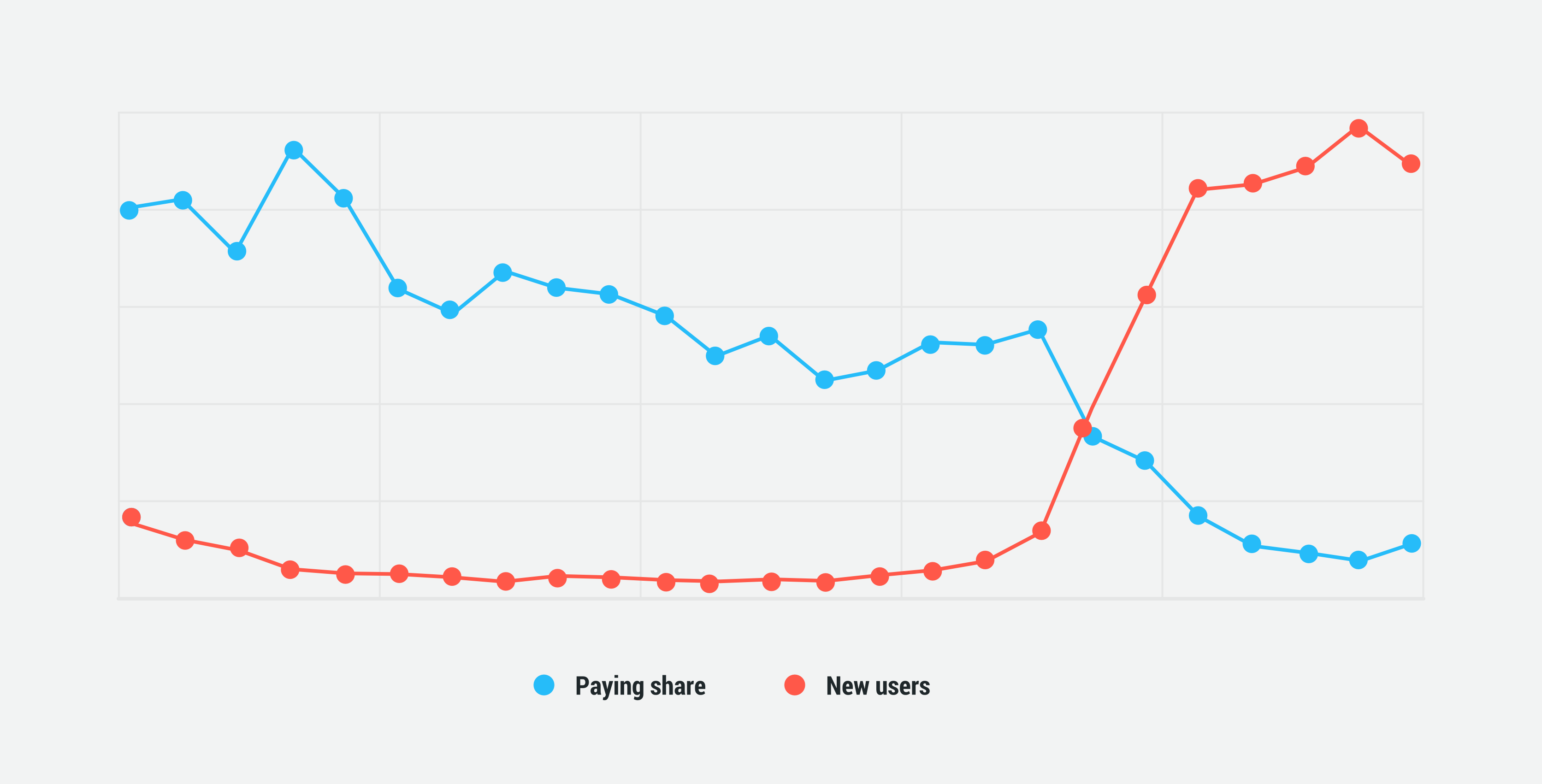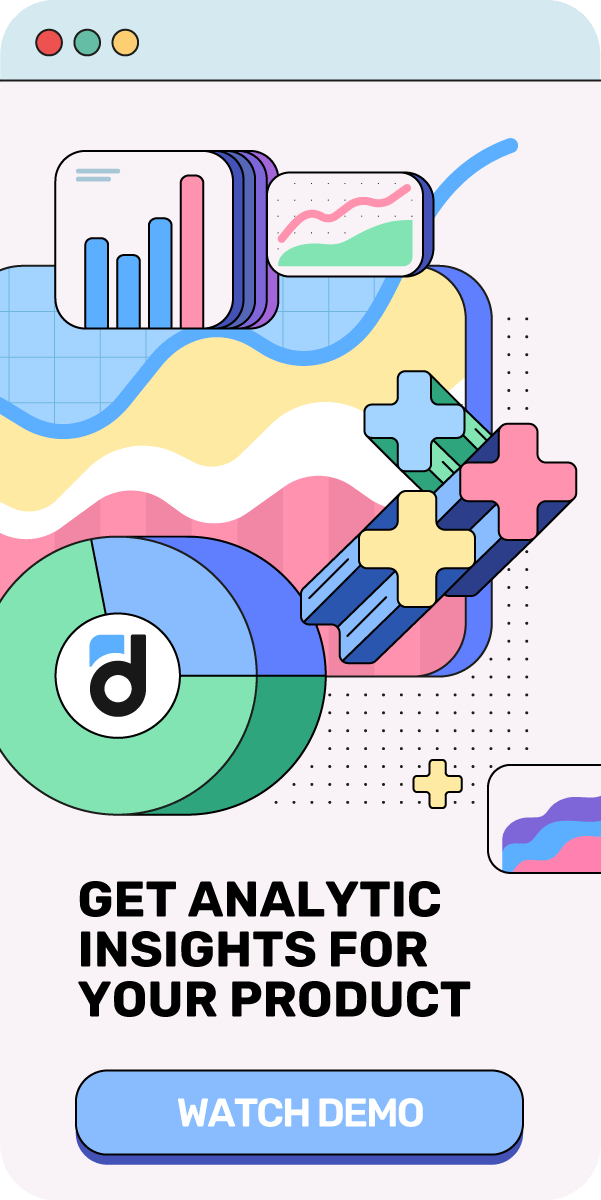The goal of making games and apps is not just joy and engagement or solving user issues - it is making money. That’s why we keep a close watch on the exact people who pay us the money - our paying or premium users. On the devtodev analytics platform, they are called ‘Paying users’ and their share of all the users - ‘Paying share’. As a rule of thumb, the higher these two metrics are, the higher your income and therefore the more successful your project.
Paying users not only earn you income but also improve your metrics. Their retention rate, for example, is higher than that of free users. If someone invested their hard-earned money in your project, they naturally will not abandon it even if they see another interesting app/game on the horizon. They will try to gain maximum value on their money first (e.g. pleasure, excitement, anticipation, etc.)
If you want to boost the number of paying users, you can do the following:
-
Add related content to your project to maintain interest in all groups of users - both newly registered and experienced.
-
Segment your users, run pricing experiments, and discover the best prices.
-
Offer discounts, run sales and promotions. It all works similarly to offline retail.
Read more: Main Metrics. Average Session Length
New Paying Users
New paying users are a group of users that deserves your special attention. They have already made the most crucial step - the first payment. If you want to earn more, you need to nudge them a bit more and turn them from minnows into dolphins or even whales. It’s not easy because it involves a lot of analytics. You need to understand their reasoning, preferences, how they got to the point where they decided to make a purchase. After that, you need to develop different marketing strategies tailored to different groups of users, then implement them, analyze them again, and improve.
Make sure to turn your new users into people who make repeat or even recurring purchases because they are the main source of revenue.
Read more: Main Metrics. North Star
Are you Sure that your Paying Audience is Growing?
To make sure that it is growing, you can apply another metric - the Paying share. It is the percentage of paying users out of all users.
Paying share formula:

Paying share is usually quite small. In f2p games, for example, it is just around 1%. It means that 99% of users do not pay at all and developers have to apply other monetization strategies.
You have to keep in mind that the increase in paying users does not automatically lead to an increase in your revenue. In case the number of users is growing but your average check is shrinking, you run the risk of losing your money rather than earning. That’s why you need to analyze ARPPU (average revenue per paying user) along with paying users and paying share metrics.
Let’s take a look at the following examples:


The number of paying users became bigger but the ARPPU dropped and your income dropped too.
Read more: Useful Tips on Providing Tech Support to Paying Customers


In this situation, the paying share shrunk but the ARPPU increased so did your revenue.
The paying users and paying share metrics work best if you analyze them together with another indicator. The paying share, for example, you can analyze together with the number of new users. If the paying share is decreasing while the audience is growing, then your new users are not your target audience and you have to stop buying traffic from the source you are currently using.

To keep your paying users on your app or game and drive them to spend more money, you need to make their UX smooth and comfortable. To do this, you need to divide them into small groups - read more about paying user segmentation here.











































































































































































































































































































































